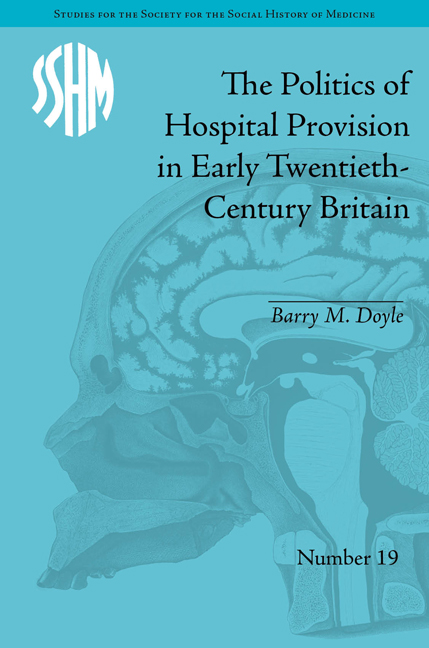Book contents
- Frontmatter
- CONTENTS
- Dedication
- Acknowledgements
- List of Tables
- Introduction
- 1 Leeds and Sheffield: Economic, Social and Political Change
- 2 Hospital Provision: Voluntary and Municipal
- 3 Patients and Access
- 4 Specialization and the Challenges of Modern Medicine
- 5 Finance
- 6 The Politics of Hospital Provision
- 7 Co-operation, Competition and the Development of Hospital Systems
- Conclusion
- Notes
- Works Cited
- Index
2 - Hospital Provision: Voluntary and Municipal
- Frontmatter
- CONTENTS
- Dedication
- Acknowledgements
- List of Tables
- Introduction
- 1 Leeds and Sheffield: Economic, Social and Political Change
- 2 Hospital Provision: Voluntary and Municipal
- 3 Patients and Access
- 4 Specialization and the Challenges of Modern Medicine
- 5 Finance
- 6 The Politics of Hospital Provision
- 7 Co-operation, Competition and the Development of Hospital Systems
- Conclusion
- Notes
- Works Cited
- Index
Summary
During the nineteenth century England acquired the hospital infrastructure which would form the institutional basis of the NHS. By 1861 there were around 65,000 hospital beds in England and Wales and this figure more than trebled to almost 200,000 by the outbreak of the First World War. Although growth slowed considerably between the wars, the stock of hospital beds had passed a quarter of a million by 1938 – a fourfold increase on the mid-Victorian period. Development was most rapid in major urban centres like Leeds and Sheffield which saw the emergence of general and specialist institutions shaped by both the generic health-care demands common to city regions of an advanced industrial nation and the specific needs of the place influenced by socio-economic structures and political considerations. In particular, Leeds developed a single acute centre with extensive associated provision for women while Sheffield saw a more fragmented acute and specialist service with strong local authority institutions all focused on addressing the health needs of adult male labour.
Prior to 1929 hospitals were created by three separate agencies reflecting separate responsibilities and income sources. Acute care for the sick poor was provided by voluntary institutions which were maintained by subscriptions, donations, legacies and other non-public funds and staffed mainly by unpaid medical practitioners and professional nurses.
- Type
- Chapter
- Information
- Publisher: Pickering & ChattoFirst published in: 2014



